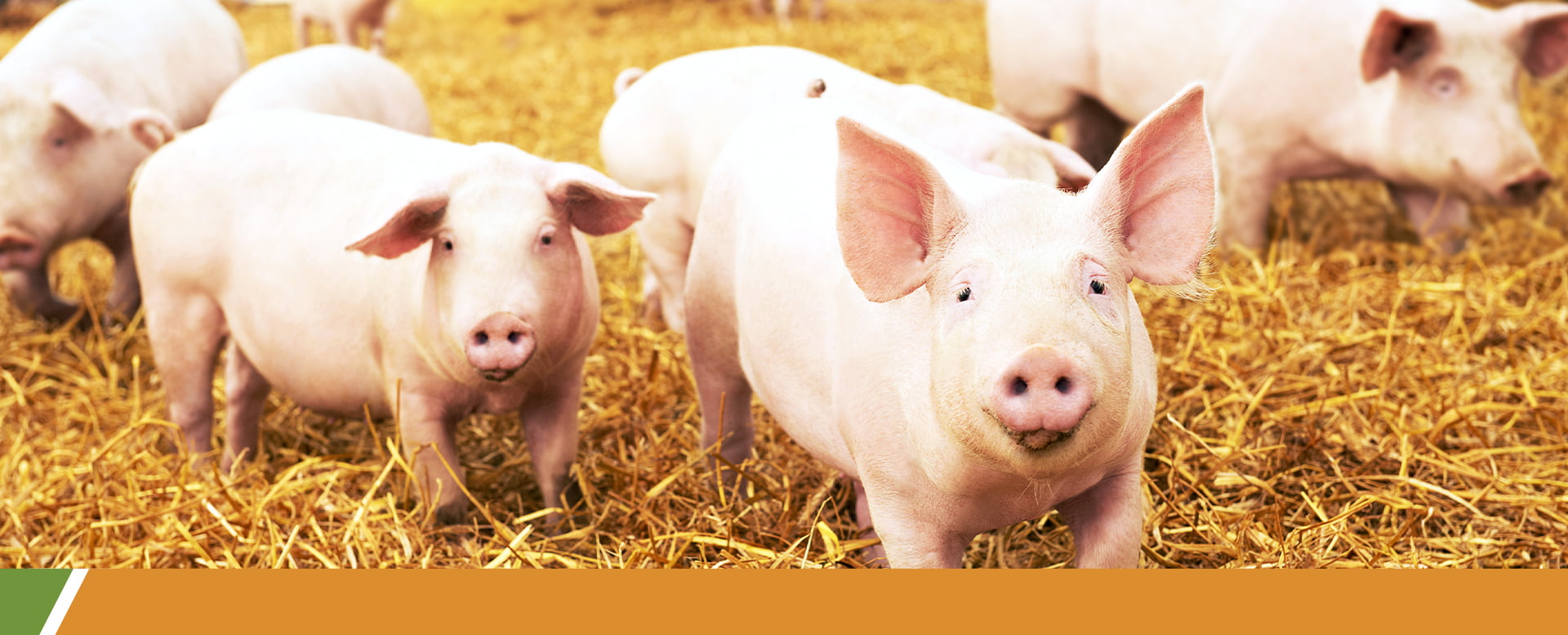Yeast Cell Wall: Guaranteed High Nutritional Performance Natural and efficient, more than just an alternative to performance-enhancing additives
Liliana Borges and Melina Bonato, R&D, ICC Brazil, 2017
Consumers are increasingly aware of the benefits of healthy diets. This makes it essential to seek solutions that maintain public health and food safety. Most recently, the use of colistin sulfate as a performance-enhancing zootechnical additive in the composition of livestock feed was banned in Brazil. According to MAPA, this ban is based on recommendations of international regulatory bodies, such as the World Health Organization (WHO), due to the possible impact on human health.
The impact of antibiotics in gut microbiota has been investigated, and researchers have shown that, in addition to changing the microbiota composition, antibiotics also affect gene expression, protein activity, and the general metabolism of gut microbiota. Not only microbial changes caused by antibiotics increase the immediate risk of an infection, they may also affect long-term basic immune homeostasis.
Biotechnology companies are searching for other additives, in addition to alternatives to colistin sulfate. As a result, the purified yeast cell wall stands out not only for its high efficiency but also for being an economically viable solution.
One of the main points that determine the effectiveness of a yeast cell wall is the β-glucans and MOS ratio. The higher the concentration of β-glucans, the less degradation of the cell wall in the gastrointestinal tract, meaning, the better its effectiveness as a “functional fiber”. The purified yeast cell wall has a BG: MOS ratio close to 2:1, while those obtained from primary fermentation have a 1:1 ratio. This difference is evident when we observe the high concentration of β-glucans (Figure 1) through photomicrographs. This produces a denser and stronger cell wall than the primary fermentation cell wall.
Figure 1. Difference between yeast cell walls:

β-glucans act by stimulating the production and activity of macrophages, which are defense cells that play an important role in the immune system: they can phagocytize and destroy microorganisms. MOS can bind pathogenic bacteria (such as E. coli and Salmonella), thus preventing colonization and proliferation of these populations in the gut.
The great binding ability of this yeast cell wall was confirmed by in vitro tests, with over 200 reviews in recent years. Our results show the averages obtained over the last three years, attesting the product efficiency (Table 1).
Table 1. Pathogens binding history
| Ano | Aglutinação de Salmonella1 | Aglutinação de E. coli1 |
| % | ||
| 2014 | 94,08 ± 4,63 | 94,08 ± 4,77 |
| 2015 | 97,60 ± 4,11 | 97,14 ± 4,39 |
| 2016 | 99,58 ± 1,41 | 99,38 ± 1,69 |
1Complete evaluation: 60 Salmonella strains and 20 Escherichia coli strains.
*Mycology Research Laboratory (LAPEMI) from Universidade Federal de Santa Maria (UFSM), Brazil.
Seeking to improve safety and reliability, the efficiency of the yeast cell wall is proven through field tests that provide results for producers/customers so that they may evaluate its potential value in their operations.
In a test conducted by Alcantara et al. (2015), weaned piglets at 28 days old were subjected to a challenge with E. coli (9.8 x 108 CFU/ml) and divided into two groups: control and supplementation with the yeast cell wall (2 kg/ton). The supplemented group showed greater integrity of gut structures, and fewer bacteria adhered to the villi surface after the challenge when compared to the control group. These results showed that the yeast cell wall has an effective action against pathogenic microorganisms and consequently improves gut health of animals.
The purified yeast cell wall stands out from other products in the market for being scientifically proven through various laboratory and field testing, thus ensuring a higher concentration of MOS and β-glucans, resulting in an additive with guaranteed results performance and excellent cost-benefit. Its benefits include immune system activation, improved balance, and integrity in the gut microbiota, which prevents the harmful action of pathogens present in the field, thus representing an effective alternative to performance-enhancing antibiotics.
The livestock industry has been challenged by concerns about public health, which demands to update and creating stricter regulations aimed at controlling pathogens in the field. This is a global and irreversible trend, as the end consumer is becoming more aware of the relationship between “nutrition and health”.
Animal production is a highly challenging environment, and farmers are the first link of the production chain. This is why they should be concerned with public health and consider food safety “from the farm to the table”. In addition to being a natural additive, the purified yeast cell wall has proven to be a viable solution for improving gut health and food safety at low dosages, resulting in an excellent cost-benefit.
References
Alcantara, A.A et al. Yeast cell wall supplementation in the diet of weaned piglets and its effect on gut health. Joint Animal Meeting, 2015, July 2015, Orlando/USA.
FRANZOSA, E. A. et al. Sequencing and beyond: integrating molecular ‘omics’ for microbial community profiling. Nature Reviews Microbiology. V. 13, p.360–372. 2015. doi: 10.1038/nrmicro3451.
FRANCINO, M. P. Early development of the gut microbiota and imune health. Pathogens. V. 3, p.769–790, 2014. doi: 10.3390/pathogens3030769.
FRANCINO, M. P. Antibiotics and the Human Gut Microbiome: Dysbioses and Accumulation of Resistances. Frontiers in Microbiology. V. 6, Article 1543, 2016. doi: 10.3389/fmicb.2015.01543
MAIA, A. P. A. and DINIZ, L. L. Segurança Alimentar e sistemas de gestão de qualidade na cadeia produtiva de frangos de corte. Revista Eletronica Nutritime, v.6, n.4, p.991-1000, 2009.
MAPA- Ministério da Agricultura e Abastecimento. News: Uso de substância antimicrobiana em rações animais é proibido. Accessed on March 3, 2017. Available at:
http://www.agricultura.gov.br/noticias/uso-de-substancia-antimicrobiana-em-racoes-animais-e-proibido
Perez-Cobas, A. E. et al. Gut microbiota disturbance during antibiotic therapy: a multi-omic approach. Gut. V. 62, p.1591-1601. 2012. doi: 10.1136/gutjnl-2012- 303184.
Posted in 13 June of 2019


